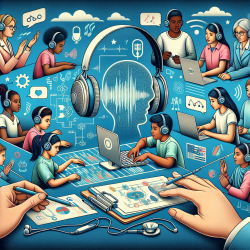Introduction to Me-LLaMA in Speech-Language Pathology
The integration of large language models (LLMs) in medical applications is revolutionizing how practitioners approach therapy and patient care. A recent study titled "Me-LLaMA: Foundation Large Language Models for Medical Applications" has introduced a family of medical LLMs that could significantly impact fields such as speech-language pathology. By leveraging these models, practitioners can enhance their therapeutic strategies, leading to improved outcomes for children in need of speech and language support.
Understanding Me-LLaMA's Capabilities
Me-LLaMA models, including the Me-LLaMA 13/70B and their chat-enhanced versions, have been developed through continual pre-training and instruction tuning using extensive medical datasets. These models outperform existing open-source medical LLMs in zero-shot, few-shot, and supervised learning abilities, demonstrating superior performance in medical tasks compared to ChatGPT and GPT-4 on several datasets.
One of the critical advancements of Me-LLaMA is its ability to mitigate the catastrophic forgetting problem, a common issue in LLMs where integrating new data erodes prior knowledge. This makes Me-LLaMA a robust tool for maintaining comprehensive medical knowledge, crucial for speech-language pathologists who require consistent and reliable information.
Practical Applications in Speech-Language Pathology
For practitioners in speech-language pathology, Me-LLaMA offers several practical applications:
- Enhanced Diagnostic Accuracy: By utilizing Me-LLaMA's comprehensive data suite, speech-language pathologists can improve diagnostic accuracy through better data interpretation and analysis.
- Improved Therapy Planning: The models can assist in developing personalized therapy plans by analyzing patient data and providing insights into effective intervention strategies.
- Efficient Documentation: Me-LLaMA's ability to process and generate text can streamline clinical documentation, reducing administrative burdens and allowing practitioners to focus more on patient care.
Encouraging Further Research and Implementation
While Me-LLaMA presents significant advancements, its application in speech-language pathology is still in its early stages. Practitioners are encouraged to explore these models further and contribute to ongoing research to refine and expand their use in clinical settings. By actively participating in this research, practitioners can help tailor these models to meet the specific needs of speech-language pathology, ultimately leading to better outcomes for children.
Conclusion
The Me-LLaMA models represent a promising development in the application of LLMs in medical fields, including speech-language pathology. By embracing these models, practitioners can enhance their diagnostic and therapeutic capabilities, leading to improved outcomes for children. As we continue to explore and implement these tools, the potential for transformative change in speech-language therapy becomes increasingly evident.
To read the original research paper, please follow this link: Me-LLaMA: Foundation Large Language Models for Medical Applications.










